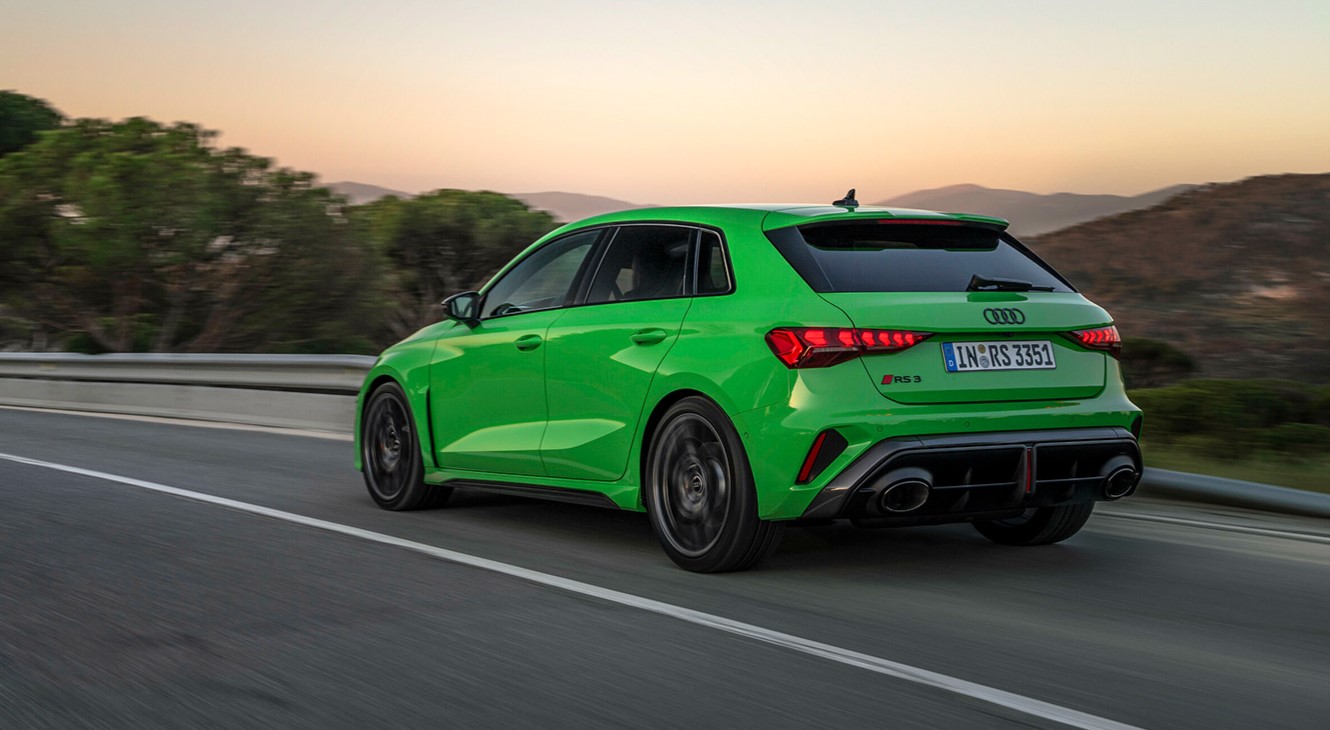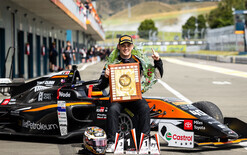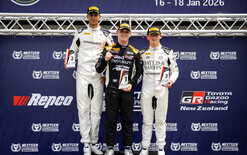Meet the upgraded RS 3

Audi Sport has upgraded the RS 3 with the compact model becoming even sportier.
It now boasts strong lines at the front with wheels in motorsport design, and a deep-throated roar for its five-cylinder engine with its signature firing sequence.
The 2.5-litre TFSI, combined with the optimised chassis set-up, propels the RS 3 around corners with a new lap record on the Nürburgring-Nordschleife confirming this.
Greg Leet, general manager of Audi NZ, says: “Drivers will feel the difference in this upgrade with increased driving dynamics and high-quality materials making it a true experience for the senses.”
The significantly sportier appearance of the RS 3 is dominated by the assertive front design of hexagonal single-frame with a striking border. Flatter and considerably broader than before, it emphasises the dynamics of the compact sports vehicle with its rhombus-pattern grille.
The same goes for the two functional side air intakes, which are accentuated by vertical black blades, the three apertures above the front splitter and revamped daytime running lights.
The large functional RS-specific diffuser incorporates a red reflector in its centre and the two oval tailpipe trims of the exhaust system look even larger in their black frames. The tail-lights feature a new graphic – arrows that dynamically light up from the inside to out with the coming home-leaving home function.
Light features & effects
The standard contour and ambient lighting illuminate new design features. These are the storage box in front of the flatter-designed shifter, the centre console with cup holders and the doors.
A night-time feature is the “planar lighting”, whereby a light source in the door panel back-lights hundreds of lasered rhombus shapes of various sizes, which dynamically light up when locking and unlocking the RS 3.
The door handles, air vents, steering-wheel cover clip and shift paddles are finished in an anthracite-effect paint. In addition to the standard two-piece version in palladium grey with carbon insert, there’s a one-piece RS-specific trim strip in matt carbon and a new variant in black dinamica as decor inlays.
The design packages in red and green add touches of colour to the seat belts, seat shoulders and air vents.
Additionally, contrast stitching on the seats, centre and door armrests, steering wheel and the 12 o’clock marker is done in the respective colour. The same goes for the floor mats in black velour, which have RS lettering.

Displays’ performance focus
The 12.3-inch Audi virtual cockpit plus with sport, performance and runway views was already standard.
These are joined by the new rev counter, which prominently displays the revolutions per minute in the centre of the cluster. In addition, there are displays for power output, torque, g-forces, acceleration and lap times.
In manual transmission mode, the RS-specific blinking shift indicator changes the rpm display from green to yellow to red to indicate the ideal time to change gears.
In addition, the temperature ranges of coolant, torque splitter, brakes, and engine and transmission oil levels are shown in colour on the 10.1-inch touch display in the instrument panel.
Engine’s more distinctive sound
The RS 3 is powered by the 2.5 TFSI engine from Audi Sport with 294kW and a maximum torque of 500Nm. The car accelerates from 0-100kph in 3.8 seconds and can reach a top speed of 290kph.
The five-cylinder engine’s sound is based on the signature 1-2-4-5-3 firing sequence. In addition, the exhaust flap control was optimised in the rpm range between 2,200 and 3,500 revolutions. In this way, the engine generates a consistent and fuller-bodied sound in all modes.
Cornering is difficult to express in numbers because the driving feel is much more important. That said, Frank Stippler set a new lap record on the Nürburgring-Nordschleife.
The Audi Sport racing and development driver set a time of 7:33.123 minutes, beating the previous record in this class by more than five seconds. His success means the RS 3 is once again the fastest compact car on the 20.832km racetrack.
Model’s driving dynamics
The basis for the driving dynamics is the interaction of the torque splitter with its fully variable torque distribution between the rear wheels, electronic stability control, wheel-selective torque control and the adaptive dampers of the RS sport suspension.
These components are relevant to lateral dynamics and are networked in the modular driving-dynamics controller where data synchronisation occurs. Thanks to a further developed algorithm, they react more acutely to driving situations.
The improved algorithm is also driving an evolution in oversteer. Previously, oversteer was generated primarily by increasing the load requirement – in other words, stepping on the throttle. Now oversteer is easier to initiate via the steering angle.
This allows the driver to obtain the same drift angle faster.
The RS 3 now performs even better in bends, avoids understeer at the entrance to the corner and turns in more willingly thanks to fine-tuning, including brake torque vectoring.
Thanks to the finely dosed brake interventions on the inside wheels, the car follows the corner’s radius more precisely than before, both in under partial load and on overrun, and can be positioned earlier and better for exiting the curve from the apex.
If you want to activate “performance” mode designed for the racetrack, you can do so by pressing the left satellite button. The button with the checkered flag icon is new, as is the red RS button on the right steering wheel spoke, which offers quick access to the model’s “individual” mode.
Final pricing and specifications for New Zealand will be released closer to local launch, which is planned for early 2025.





